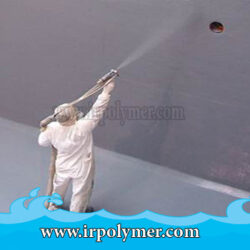Protecting equipment to ensure safety while saving on repair and replacement costs is essential. One popular way to protect tanks, process equipment, and pipes is by using protective coatings like rubber lining. Rubber lining entered the market in 1929 when experts realized this material was excellent for protecting steel storage tanks.
Rubber lining is a popular material because it can withstand abrasive and corrosive applications. This protective rubber membrane helps reduce equipment downtime and maintenance costs. Rubber lining possesses properties that make it an excellent option for a protective coating.
Properties of Rubber Lining
The primary advantages of rubber lining are its high resistance to corrosive and abrasive chemicals such as acids, alkalis, brine, shot blast environments, etc. Additionally, rubber lining offers other benefits, including noise and vibration reduction, electrical and thermal insulation. Rubber lining is used inside tanks, valves, pipes, and similar equipment to minimize risks of contamination, shock, ignition, or explosion to the main contents.
The purpose of rubber lining is to protect tanks and pipes from corrosion or abrasive damage and to extend their lifespan. Rubber lining is used in various applications, such as chemical, mining, fertilizer, electrochemical, steel, transportation, and environmental sectors. Using the latest technologies, rubber lining is produced in different thicknesses to be used in various industrial conditions.
Other beneficial properties of rubber lining include:
- Invariance in size and shape
- Protection from impact, explosion, noise, and vibration (due to damping capability)
- High corrosion resistance
- High flexibility and elasticity
- Abrasion resistance
- Capability as a thermal insulator
- Ability to bond with metal and concrete surfaces
- Savings on raw materials and manufacturing costs
- Savings on transportation costs
- Non-corrosive reinforcement system
- Compatibility with various resins such as epoxy resin, polyester, etc.
Types of Rubber Lining
Rubber lining is generally divided into two categories: natural and hard. Both natural and hard linings are used to make various types of rubber linings.
Soft Natural Rubber Lining
These rubbers have features such as low hardness, high elasticity, and flexibility. They are abrasion-resistant liners that help absorb and dissipate the impact of abrasive forces. These rubbers are suitable for lining slurry tanks, pipe linings, pump linings, etc. Soft natural rubber linings are also used for storage tanks to resist hydrochloric acid and sulfuric solutions.
Hard Rubber Lining
Rubber liners are resistant to chemicals due to their good flexibility and impact resistance. Some hard rubber linings are graphite-based, which provide good chemical resistance at high temperatures. Others are vulcanized with exhaust steam, suitable for lining vessels that cannot be cured under pressure steam. Hard rubber linings are suitable for storage tanks, reactors, and plants using ion exchange membrane processes.
Other types of rubber linings and their applications include:
-
- Chlorobutyl/Bromobutyl: Weather/ozone resistance, sodium hypochlorite solutions, high-temperature acid/alkaline solutions
- Ethylene Propylene Diene Monomer (EPDM): Oxidizing solutions, weather/ozone resistance, specific solutions at high temperatures
- Buna Nitrile: Aliphatic hydrocarbons, abrasion, and heat resistance
- Neoprene: Good physical properties, UV and ozone resistance
Applications of Rubber Lining
Rubber lining is excellent when you need to protect your pipes and tanks from abrasive or corrosive materials, including mineral slurry, acids, brine, corrosive liquids, and fumes. This is why it can be used in chemical plants, power plants, steel mills, and mines. Rubber lining requires minimal maintenance and downtime.
Rubber lining is also used for protection against abrasive materials or minerals. It protects steel and other materials from wear and tear. Additionally, rubber is useful when a tight seal for water or gas is needed. Rubber seals are effective even in the harshest environments. Rubber linings can also be made with anti-static properties to provide electrical resistance.
In general, rubber lining is used as a protective coating in the following applications:
- Hydrochloric acid storage tanks
- Sodium hypochlorite storage tanks
- Dilute sulfuric acid storage tanks
- Phosphoric acid storage tanks
- Nitric acid storage tanks
- Alkaline storage tanks such as caustic soda
- Corrosive material transport tanks
- Industrial water treatment tanks
- Mixed bed storage tanks
- Resin washing and regeneration tanks
- Anion and cation storage tanks
Conclusion
Rubber lining is used in piping systems and tanks for storing and transferring acids and alkalis, as well as in saltwater cooling systems, desulfurization, pump casings, and agitators. Whether you need noise and vibration damping, protection against mechanical wear, or high corrosion resistance, rubber lining can be a suitable solution for various applications. Rubber lining also increases the service life of equipment and is cost-effective. Therefore, it is important to pay special attention to the quality of rubber lining manufacturing and its proper implementation.



